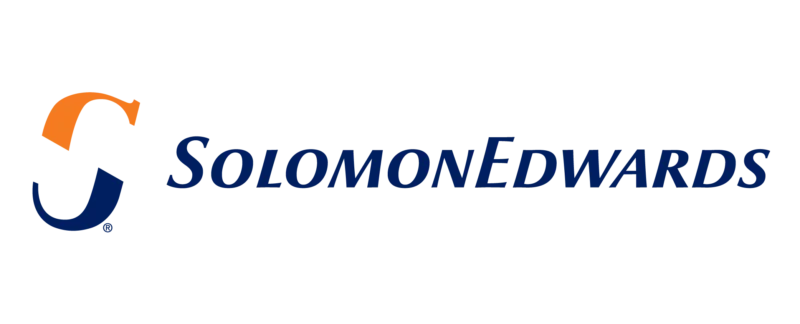With the right plan and tools, finance teams can execute a virtual close to provide timely, efficient, and accurate reporting now and in the future.
Closing the books remotely can present unprecedented complexities, especially for companies that rely on in-person systems and manual accounting methods. Suddenly, teams are doing the month-end and quarter-end closing from home, which means organizing, validating, and reconciling data and processes across disparate systems in a remote, decentralized environment. But with strategic shifts in people, process, and technology, a successful virtual close is attainable.
With the right tools, employees working outside of the office can collaborate and communicate with their colleagues in a timely and effective manner. Updated technology and protocols can help remedy foundational issues such as cybersecurity concerns over protecting sensitive data and ensuring the appropriate controls environment.
Although there’s no question that closing the books remotely is somewhat more complicated than the traditional “on campus” approach, you can craft a plan to create an effective virtual close process that will add lasting value to the company along with flexibility to your recurring close.
“In the middle of every difficulty lies opportunity.” – Albert Einstein
Short-term Necessity Leads to Long-term Value
Successfully navigating today’s challenges will have prepared many businesses to tackle future disruptions. CFOs are fast-tracking the virtual close to meet financial reporting deadlines, and the result could pay off both now and when business normalizes.
A virtual close isn’t an emergency stop-gap. Whether employees go back to the office or continue to work from home, finance departments can leverage new resources that will expand strategic capacity. The CFO’s role increasingly carries more influence within an enterprise. Just as the 2008 downturn elevated the CFO’s role in the organization, finance organizations will be called upon to deliver even more business-centric services and go well beyond crunching numbers and gathering and analyzing data. A virtual close will support these efforts.
The concept of a virtual close has circled the finance world for two decades
Prior to the significant level of automation and technological tools available today, companies were considering the benefits and risks of closing their books remotely to give management real-time access to detailed data. The Sarbanes Oxley (SOX) Act of 2002 initially stifled enthusiasm for exploring a virtual close; departing from tried and true methods wasn’t worth risking errors or ambiguity. This does not discount the fact that SOX controls are obviously still a prominent consideration in developing your plan.
More recently, new technology has made it easier to do a virtual close.
The current environment has shifted the conversation around the digital transformation of finance from “nice to have” to “must have.” Now the need to close virtually is imperative. How do you design a model that allows you to maintain efficiency and control in reporting? It’s time to change the playbook.
Now is not the time to simply put out fires with quick fixes. Instead, consider seizing the moment and introducing forward-thinking, more sustainable initiatives to help you succeed.
Adopt processes and delivery models that can absorb disruption to close the books and manage cash, credit, and risk. Confirm visibility across the enterprise to help make timely and well-informed decisions. If necessary, resize cost structure and define your new operating model. The best strategy is agile, efficient, and digitized.
Evaluate current activities
Assess the current state of business need and skill-sets to identify resources. What does the financial close and reporting flow look like now? What is the scope of close activities?
Draw up a new blueprint
Develop a service delivery model that revolves around efficiency, cycle times, quality, and accuracy of data metrics, SLAs, and targets. Establish transparent governance protocols and delineate well-defined ownership of tasks based on the new remote close calendar.
Instituting geographic coordination is one of the biggest hurdles when employees are offsite, as it requires flexibility. Can employees access systems using current technology? If not, consider how you can build in more accessibility for those offsite.
The Right Technology and Tools
Close management software, cloud-based platforms, integrated messaging tools and at-a-glance dashboards help companies close the books from home.
Many companies have invested in these services. Estimates made in 2019 indicated that global revenues for cloud services were expected to hit more than $330 billion by 2022, according to Gartner research.
Using these tools, organizations such as the multinational technology company Oracle have reduced close time by as much as 20 percent, even with finance teams working from home. In March, one of Oracle’s subsidiaries closed its books in a single day, and will serve as a test case for moving all of the company’s finance systems to the cloud.
When exploring these solutions, collaborate with your CIO to make sure all teams are maximizing resources. Vet technology tools with stakeholders, including auditors.
Plan to provide on-the-job training and deploy new resources
Although budget considerations may make on-the-job training and resource deployment challenging, the first step is to get everyone on the same page. Create and communicate a remote close calendar. Help everyone to understand how data flows. What data are available and when?
Realign people based on updated or required skill-sets and availability. Before building a roadmap and timeline, consider which team members will be your MVPs, and how to train them. Communicate changes and updates with auditors to reconfirm key materiality and journal entry thresholds to support efficiency. Hold regular meetings to ensure compliance.
Determine how to monitor and stabilize the virtual close
Operationalize and monitor new governance practices to confirm that services and quality have stabilized. Use a remote financial close “scorecard” that tracks metrics of critical importance in this new environment.
Use a Target Operating Model (TOM)
Just like any core corporate strategy, a well-structured operating model can help you visualize and execute changes. A Target Operating Model (TOM) will help you set up a successful transformation roadmap and organize, deploy, and scale your virtual close.
What is a TOM?
A TOM is a framework for making explicit choices about the best deployment of resources to achieve a goal. It breaks down “the operating problem” into logical chunks.
For example, instead of focusing on how much your plan will cost to roll out, use a TOM to elevate the conversation to, “What are we trying to do with this business”? Move the debate from the tactical to the strategic.
Use a TOM to bring clarity to decision-making and as a communication tool to help you educate and persuade executives and stakeholders across the business.
Identify scalability, efficiency, and effectiveness initiatives using the six dimensions of a TOM as a model
Service delivery model
Identify what and how functional capabilities (e.g., Finance, Procurement, and IT) are delivered to the organization. Leverage leading practices for shared-service centers, outsourcing services, centers of excellence, employee and manager self-service, and others.
Organization/People
Determine how people are organized, including lines of reporting and spans of control. Outline skills, roles, responsibilities, and support activities for each process area and where they reside.
Functional Process
Delineate how specific steps link to functions or departments that perform each step, and accompanying policies and procedures to be followed when performing them.
Supporting Technology
What applications, infrastructure, and operational components and elements will support enterprise technology services and functions? These components come together to create the user experience and interaction points for stakeholders. Applications enable processes, policy compliance, internal controls, and generation of reports.
Information
Include information requirements, master data strategy, and key process indicator (KPI) frameworks to drive business insight and optimized decision-making. This enables financial reporting needs, management reporting needs, and analytics.
Governance
Set the vision, guarantee value delivery, and align business services to the organization’s objectives based on strategic and operational governance. Identify the specific controls that are in place to reduce operational and financial risks and governance to manage data, processes, and other assets.
To design a virtual close ecosystem, use a TOM to consider how to:
- Realign the close calendar and establish a new cadence to complete tasks based on the virtual availability of resources. (Process and People)
- Deploy a Project Management Office to monitor the availability of important resources as well as the progress of the close. (Delivery and Governance)
- Design and implement a virtual dashboard to monitor the close. (Data and Process)
- Identify and mitigate critical points of technology failure—system access, system availability, collaboration tools, extra monitor, etc. (Technology)
Find objective advice to help you make decisions thoughtfully (and quickly)
Developing and adopting a virtual close requires resources and expertise. In turbulent times, many companies are short-staffed or unable to mobilize without help. An objective professional can help provide a roadmap to get your strategy up and running.
In a crisis, look for the silver lining. Launching a well-developed TOM now will help drive value for the organization now and in the future.
Subscribe to our insights newsletter for more insights surrounding accounting close and other accounting & finance topics.




